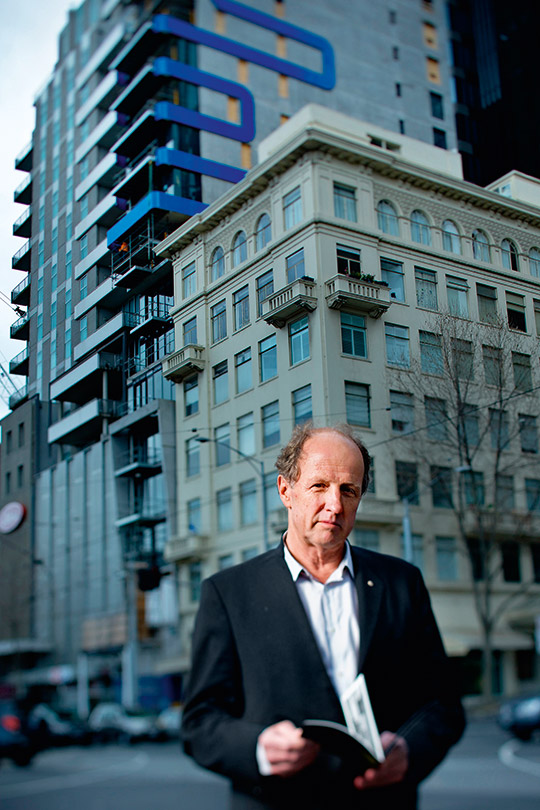Wanted: choreographers to shape our urban destiny

Professor Rob Adams AM – Professorial Fellow, University Of Melbourne. Picture: Chris Hopkins
Professor Rob Adams argues that cities are critical in grappling with the economic, social and environmental challenges of the 21st century. So where are the professionals and leaders to shape that future?
Cities contribute 70 per cent of global greenhouse gases and will be home to 70 per cent of the world’s population by 2050. And in Australia, 80 per cent of all economic activity takes place in our major urban centres. So why is it that the world’s cities are so often overlooked in discussions about our future?
It was this question I had in mind when I attended my first World Economic Forum in November 2009 as a member of what was to become the Council on Urbanization. My aim was to articulate an argument for cities to be included on the agenda by world leaders at Davos.
So imagine my surprise as I sat in the plenary session after three days of deliberation and realised that cities had once again been unsuccessful in getting onto the agenda. Were they not seen as a central part of the debate about our future?
This issue has rattled through my head in one form or another for the past 45 years.
Indeed, my thinking around the nature and future of our cities began to crystallise after three highly formative experiences in the late 1960s and early 1970s.
The first of these experiences happened in Europe during a period of travel study, as part of my architecture degree, in 1969. After visiting cities in Scandinavia and Italy I quickly recognised the failings of our modernist cities as places for people. Whether it was the satellite towns outside Stockholm, the housing at Albertslund in Copenhagen or the new towns of the UK, the preoccupation with minimalist architecture and single-use programs had placed the emphasis on separation and single objects above the overall quality of the public realm and produced soulless living environments.
Equally, their suburban cousins – products of the Garden City Movement that was built on the promise you could live in the country (suburb) and work in the city (CBD) – were starting to fail as they were increasingly spread thinly over vast areas, fast becoming the producers of traffic congestion and social isolation. All of this was in contrast to the urban riches of more traditional town and cities.
At around the same time as this eye-opening experience, I read Alvin Toffler’s Future Shock, which made me acutely aware of the pressures of unconstrained population growth, and our failure to combat or accommodate it. It was nearly a decade later when I was working in squatter settlements in Harare, Zimbabwe, that I first recognised that as families migrated to urban areas, and opportunities for employment and betterment increased, family size tended to reduce. In short, our developed cities have shown us that urbanisation can be a very effective contraceptive.
The final experience that was critical to my early thinking around cities was my return to the University of Cape Town and the (then) recently formed Campus Planning Unit in 1970. This was a time when large numbers of baby boomers were enrolling in tertiary education and most universities around the world were in expansionist mode.
However, Cape Town University’s ability to grow was constrained by its location on the side of Table Mountain and the surrounding national parks. The university’s challenge was how to get more out of a constrained site while respecting the medium-rise design framework put in place by British architect Sir Herbert Baker.
This challenge, and the realisation that many of their facilities were underutilised (lecture theatres were used for only 17 per cent of the day), led them to a program of re-timetabling and gap filling rather than expanding their “footprint”. This approach allowed the university to triple its student population over the next four decades while saving hundreds of millions of rand by getting more out of its existing infrastructure. Another effect of this greater concentration of students was a vibrant campus that was active for most of the day.
I thought that if this approach worked for a university then why not for a city? These three experiences helped formulate my thinking around the central role cities would need to play in mitigating many of the global issues facing us as we enter the 21st century.
I realised that communities seemed to attain a better balance when they came together in dense, mixed-use situations that had good connectivity (where people can meet most of their daily requirements on foot or public transport), and a high-quality public realm designed for local conditions. In addition, it appeared that these compact places provided greater choice, resulting in less need or desire for the large families that typify many rural areas.


